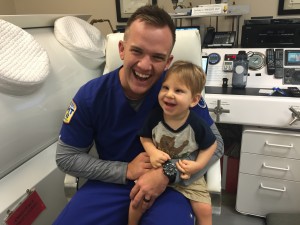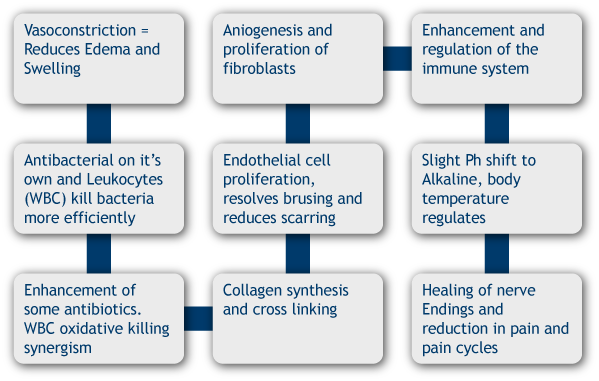
HBOT & Pediatrics
Conditions Benefitted
- Autism
- Hypoxic birth disorders
- Cerebral palsy
- Near Drowning
- Birth asphyxia
- Prenatal insults
- Premature birth
- Postnatal hemorrhage
How will YOUR patient benefit?
HBOT Effects:- Relieves Hypoxia
- Improves microcirculation
- Relieves cerebral edema by vasoconstrictive effect
- Improves cerebral metabolism

- At a conference “New horizons for Hyperbaric Oxygenation” in Orlando Florida in 1989, results were presented of HBO therapy of 230 CP patients who had been treated in the early stages since 1985 in San Palo, Brazil (Machado 1989). Treatment consisted of 20 sessions of 1h each at 1.5 ATA (100% oxygen)once or twice a day in a monoplace chamber.
- The results showed significant reduction of spasticity: 50% reduction in spasticity was reported in 94.78% of the patients. 12 patients remained unchanged. However, follow-up included on 82 patients, 62 of these (75.6%) had lasting improvement in spasticity and improved motor control. The parents reported positive changes in balance and “intelligence with reduced frequency of seizure activity.”
- Another study included 2,030 patients suffering from childhood chronic encephalopathy that had been treated since 1976, 232 of whom had been evaluated with long-term follow up; age ranged from 1 to 34 years. The improvements were as follows: 41.81% decreased spasticity, 18% noted global motor coordination improvement. Improvements were also noted in attention: 40.08%, memory, 10.77%, comprehension, 13.33%, reasoning, 5.60%, visual perception, 12.93%, sphincter control, 6.46%.
- At the 2nd International Symposium was a study by Chavdarov, Director of the Specialized Hospital for Residential Treatment for Rehabilitation of Children with Cerebral Palsy in Sofia, Bulgaria, where HBO had been considered an important part of the management of children with CP since 1997. The study included 50 children with distribution of various types as follows: spastic CP (n=30), ataxic/hypotonic cerebral palsy (n=8), and mixed cerebral palsy (n=12). Measurements included motor ability, mental ability, functional ability, and speech. Overall psycho-motor function (single or combined) improved in 86% of the patients following 20 HBO sessions at 1.5-1.7ATA lasting 40-50 min once daily.
- In 1999, the first pilot study in the use of HBO in CP was published (Montgomery et al 1999). This study involved 23 children (10 female, 13 male; age range 3.1 to 8.3 years) with spastic deplegia. The study was performed at McGill University Hospital’s Cleghorn Hyperbaric Laboratory in a monoplace chamber at 1.75ATA for 60 minutes daily for 20 treatments in total.
- The number of treatments was inadequate as the authors of this chapter had recommended 40 treatments at 1.5 ATA/60 min, because consolidation of the gains does not occur until 30-35 treatments. Also noted: HBO-treated groups had more rapid response rates in the more severely disabled children.
Fort Augusta Study
Physicians at the US army base in Fort Augusta, Georgia conducted a study on nine children, all with anoxic brain injury. All subjects received 80 HBO treatments [in a medical, hard shelled chamber] (100% oxygen) at 1.70 ATA (60 minutes for each session) daily (Monday-Friday) for 4 months. Each patient served as his or her own control as compared to baseline scores. Improvements in GMFM in the categories of lying and rolling, crawling and walking, sitting and walking, running and jumping were statistically significant (p < 0.05). The total time necessary for parental care also showed a statistically significant improvement (p < 0.03%) in reduction of custodial time required. Three children demonstrated improved swallowing function and were able to ingest a variety fo liquids and foods; there was a reduction in strabismus in two subjects, nystagmus was resolved in one participant, and one patient experienced complete resolution of a grade 3 vesicoureteral reflux, obviating the need for surgery. Overall improvement was 26.7% at 30 treatments, up to 58.1% at 80 treatments.
Three children demonstrated improved swallowing function and were able to ingest a variety fo liquids and foods; there was a reduction in strabismus in two subjects, nystagmus was resolved in one participant, and one patient experienced complete resolution of a grade 3 vesicoureteral reflux, obviating the need for surgery. Overall improvement was 26.7% at 30 treatments, up to 58.1% at 80 treatments.
 in HBO textbook, Page304
in HBO textbook, Page304
Click on the link below to see what conditions related to your medical field are treatable with Hyperbarics. View Conditions Contact